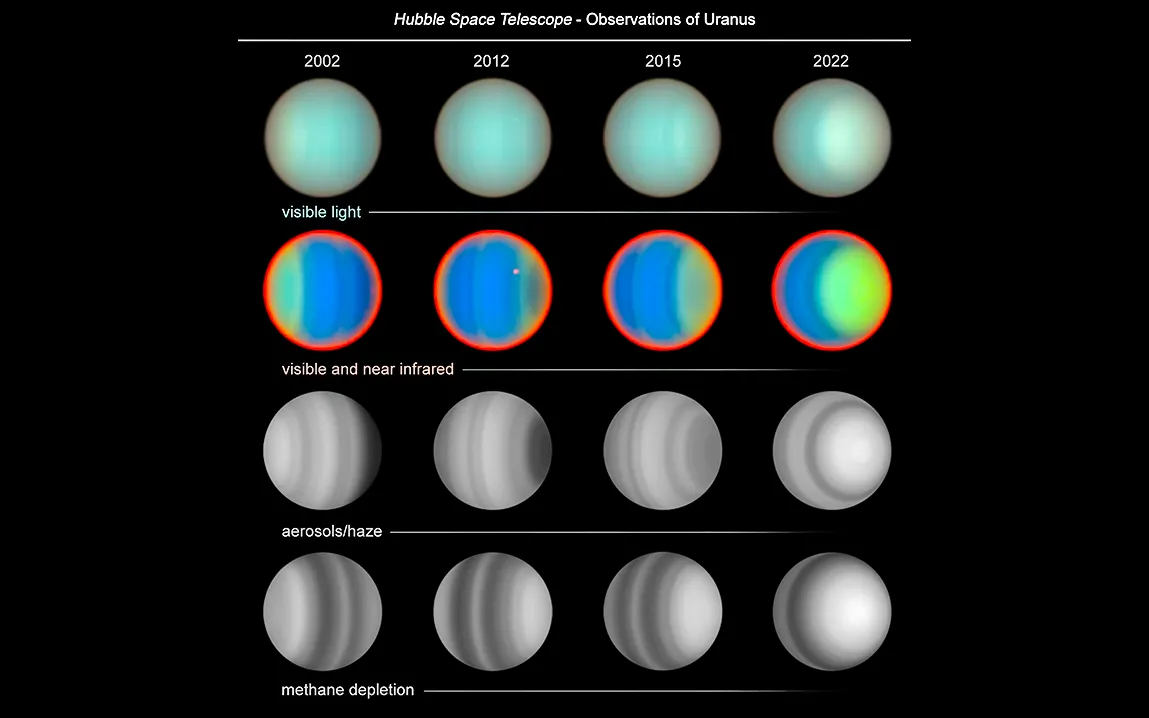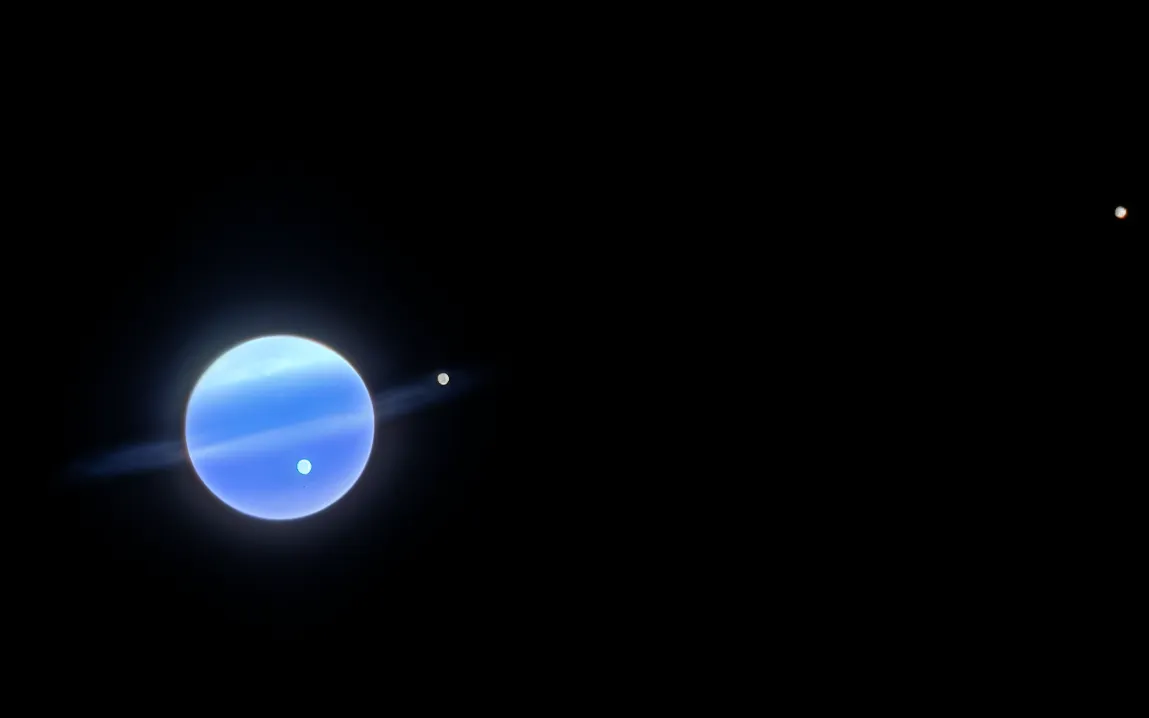NASA’s Hubble Space Telescope has been silently observing Uranus for the last two decades, and now, scientists are finally unlocking this icy giant’s atmospheric secrets. They received a clearer picture of how one of the solar system’s most mysterious planets works.
A Planet Like No Other
Uranus stands out in our solar system for many reasons. It spins on its side, has a bluish color, and takes a whopping 84 Earth years to complete a single orbit around the sun. When NASA’s Voyager 2 spacecraft flew past the planet in 1986, it seemed almost featureless, like a giant, blue-green billiard ball.
But Hubble, with its sharper tools and the luxury of time, has done what Voyager couldn’t: track long-term changes.
Four Observations, 20 Years of Discovery
Between 2002 and 2022, Hubble observed Uranus four times using the same instrument, the Space Telescope Imaging Spectrograph (STIS). This consistent, high-resolution approach allowed researchers to monitor seasonal and atmospheric changes across the years. Led by scientists from the University of Arizona and the University of Wisconsin, the team got a detailed look at the planet’s upper atmosphere.
What’s in Uranus’s Air?
Uranus’s atmosphere is made mostly of hydrogen and helium, with a bit of methane, water, and ammonia. It’s the methane that gives Uranus its distinctive cyan-blue color by absorbing red light from the sun.
But Methane isn’t spread evenly. Unlike Jupiter or Saturn, Uranus has a significant methane shortage near its poles, and this hasn’t changed much in 20 years.
Seasonal Shifts and Polar Brightening
While the methane stayed mostly the same, other atmospheric changes were dramatic. As Uranus moves toward its northern summer solstice in 2030, its north pole has been steadily brightening, while the south pole has darkened, entering its long winter.
The team found that aerosol haze (basically, layers of particles in the atmosphere) has increased a lot in the north. In early observations, the north looked dark and hazy, but in recent years, it’s turned bright, suggesting that sunlight plays a big role in altering the planet’s atmosphere.
A Look Beneath the Clouds
Using both visible and near-infrared light, the team created false-color images that reveal what human eyes can’t see. These images show how methane and aerosols are spread across the planet, with green areas showing low methane, blue areas showing more, and red areas indicating no methane at all.
The data also showed how aerosols behave differently from methane, especially near the poles. While methane levels remained high in both polar regions, aerosols near the north pole increased significantly as sunlight returned.
Why It Matters?
Uranus may be far and cold, but studying it helps scientists understand more than just one planet. Because it’s similar in size and composition to many ice-giant exoplanets, learning how Uranus works could offer clues about planets in other solar systems too.
And thanks to Hubble’s long, steady watch, we’re getting a rare front-row seat to a planet’s slow-motion seasonal shift, something Voyager could never capture in its short flyby.



